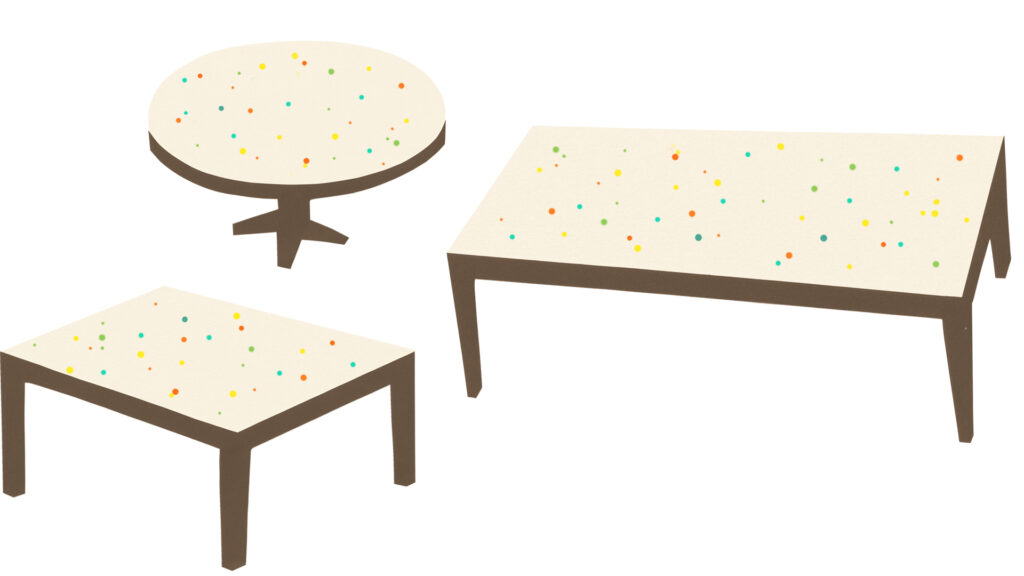During winter, seeds have all the nourishment they need in their protective casing: all they need to do is waiting and slowly absorbing water so they are ready to sprout in spring.
I would like to invite you to celebrate this life circle with a creative activity. It can also represent a kind of collective work for celebrating the rebirth and the new beginning that follows each end.
First, let’s prepare what is needed. Cover the entire surface of one or more tables with a large sheet of paper (200 gr would be the best) and fix it so that it will not move. Then, draw randomly scattered coloured dots on the sheet. Finally, display some artistic materials on another table or support (markers, coloured pencils, oil or wax crayons, watercolours, etc.).

A variable number of people of all ages can participate, but it is also possible to have an individual experience, more intimate and contemplative. Of course, the available tables will be proportional to the number of the participants.
Each coloured dot represents a seed that, after resting for the whole winter, is now ready to bloom and expand into whatever shape you imagine – not necessarily the realistic shape of a flower.
Everyone can move freely around the table, choosing a seed at a time and making the colour finally release its energy and flow, occupying a space.

How can the chosen colour-seed you chose grow up and develop? Try to “listen” to it, to leisurely observe it for a moment…
What is its expansion strategy? Through points, lines, areas, shapes? How is it going to move and to connect to the other seeds?


The development of any plant element depends on both the seed, the soil and the climate of where it is located. Similarly, signs and shapes will be influenced by both the artistic tools used for drawing and the type of paper that covers the table (and the social climate of the participants). For example, on a smooth paper markers will trace a kind of line differently than on a rough or wet paper.

Very different shapes will probably emerge and will gradually occupy the space of the sheet, getting closer to each other. How do they react?

Finally, the whole sheet will turn into a large flower garden. The work can be considered completed when all participants are satisfied with the result and perceive an overall harmony of the composition.
Above all, do not rush. You cannot force any blade of grass to grow.

This post is part of the project Grammar of Drawing by Suzanne Axelsson, Nona Orbach and Roberta Pucci.
It has been translated in four languages:

